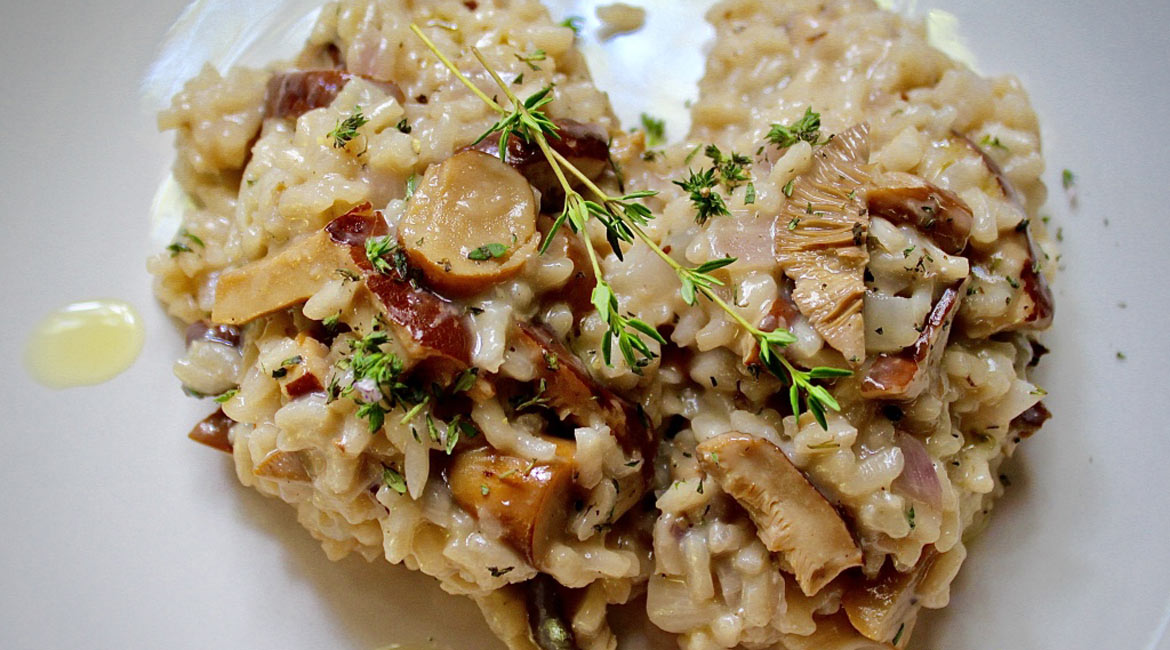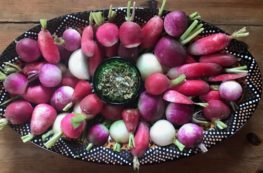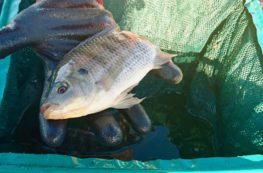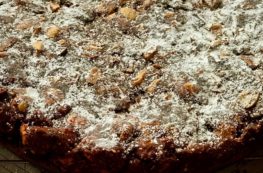According to The Kenya Settlers’ Cookery Book and Household Guide, which was first published in 1928, there is a TEST FOR MUSHROOMS. I quote: “With mushrooms one cannot be too careful. Commence peeling the outside white skin of the mushroom, from the edge to the crest. If the skin does not come off easily the mushroom is suspect. To make sure, if not certain, put a shilling in the pan of frying mushrooms. It will turn black if they are of a poisonous variety.”
It would take a brave (or benighted) woman, newly arrived in Africa, to venture out into the bush for wild mushrooms using only a shilling as a guarantee she wasn’t about to kill off her husband. Even now, after two mushroom seasons, I won’t forage on my own. I’ve no interest in ending our lives like Romeo and Juliet, at least not yet.
Adelina Banda, my Zambian assistant, on the other hand, has no such worries. A couple of days after a good downpour, she will disappear into the bush just beyond our house for an hour or so, and return with a bowlful of different colored edible mushrooms. I sometimes go out with Adelina when she forages, only to marvel at how, through an innate understanding of the land that grew her, she unearths mushrooms camouflaged in the trees’ detritus.

There are about four or five different varieties of edible native mushrooms growing in the woodland near our house. From shocking orange chanterelles to the chinyika mushrooms, pictured above; from storybook tall white mushrooms to an oyster-like variety that are so delicate one feels almost afraid to pick them. In Choma, a farming district two hours north of Livingstone, you can find an edible variety the size of a bicycle wheel, and that is not an exaggeration.

Adelina knows which ones should be eaten soon after picking, which ones last for days in the fridge, and which ones can be dried and stored. She knows how to easily remove the sand from the mushrooms’ gills, and she knows many different ways to prepare them. We love the dishes she cooks, but for Chris and me ’tis the season for risotto. Wild mushroom risotto!
It hasn’t rained as it should have done this January, so our choice of mushrooms is not as varied as it could be. Today, Adelina found some chinyika mushrooms that are meatier and more robust than other native varieties. Not unlike a shiitake, it’s a good mushroom for a risotto because it doesn’t disintegrate into the rice, although the jury is out on the strength of its flavor, which is why I decided to enhance the dish with a drizzling of white truffle oil, given to me by a recent guest.

Wild Mushroom Risotto
Yield: 2-4 servings
Ingredients:
- 3 cups chinyika mushrooms
- 4 cups vegetable stock
- 1 tablespoons olive oil + 1/4 cup butter
- 1 medium onion, finely chopped
- 1 clove garlic, minced
- 1 cup Arborio rice
- 1 cup dry white wine
- 1/2 cup Parmesan cheese, grated + 2 tablespoon for garnish
- 1 tablespoon fresh thyme, removed from the stem and finely chopped + 1 teaspoon for garnish
- Salt and black pepper to taste
- Optional: a drizzling of white truffle oil
Method:
- Wash the chinyika mushrooms thoroughly to remove all the sand and grit, and roughly chop them into bite-size pieces. Transfer to a medium bowl, pour a cup of boiling water over the mushrooms ensuring they are covered, and leave to soften and plump up while you start preparing the ingredients for the risotto, about 20 minutes.
- Remove the mushrooms with a slotted spoon, and add the mushroom-infused water to the vegetable stock. Set the mushrooms aside.
- Bring the vegetable stock up to a boil, and then let it simmer on the lowest heat.
- Heat the olive oil and butter in a heavy-based saucepan over a medium heat. Add the onions and cook until soft and translucent, being sure not to brown them (if they get too hot, cover the saucepan with a lid for a minute or two). Add the crushed garlic and stir for a further minute or two.
- Turn up the heat to high and add the Arborio rice, stirring all the time and making sure it is well-coated with fat. Cook until the rice is very hot and almost translucent.
- Pour in the white wine, continue stirring, and allow the rice to soak it up, about 4-5 minutes.
- Start adding the hot stock, half a cup at a time, stirring constantly until it has soaked into the rice. Continue doing this until all the stock is used up and the rice is soft and creamy, about 18 minutes.
- Carefully mix the softened chinyika mushrooms through the rice and cook for a couple more minutes. Remove from the heat, and add the Parmesan cheese and fresh thyme.
- Season with a little salt and lots of freshly ground black pepper.
- Drizzle a few drops of the white truffle oil on to the risotto once it is on a serving dish.
- Garnish with a sprinkling of Parmesan cheese and the finely chopped fresh thyme.






12 Comments
Drooling at the photo! Makes my stove-top vegetables and cous cous look downright dull.
Thank you, Courtney … not much beats a mushroom risotto, to be sure!
Hi great posting gonna try
Thank you for your kind comment, Mike. Let me know how it goes when you try it! All the best to you … Annabel
Yum!! We used to get lots of Chanterelles round Fernhill (where you came to stay). Didn’t realize they grew in Africa – yours look very red by comparison. Beautiful photos!
Thank you so much, Bridgey! The chanterelles are actually bright orange … and are a sight to behold in any dish in which you put them. That said, we haven’t seen many this year. I remember Fernhill fondly. It was beautiful. Lots of love to you … xo
Yes, it would be a brave woman indeed. But how lucky to know people who really know what they’re doing. Love the photo of the Chinyika.
Yes, Michelle … we are lucky. And I so enjoy learning all I can about the wild edibles from the Zambians. This place is bountiful! Thank you for your kind comment.
Hi Annabel, I will have to send you a link for another news item today – South Africa’s first official black truffle. I do think we could do more to encourage Zambia’s wild mushrooms and turn them into a local industry – along the guidelines of Wendell Berry. So watch this space…but don’t hold your breath.
Thank you for your comment, Bruce. In my research on wild mushrooms, I have seen that small-scale enterprises have been set up by NGOs here in Zambia. I have no idea of their success, however. I look forward to reading about South Africa’s first black truffle … how interesting! They were starting to grow them in Virginia, too, when I was there … using spores imported from Tasmania, where they grow very successfully.
[…] definitely won’t rely on the advice from the Kenya Settlers’ Cookery Book I quoted in a recent post about adding a shilling to the pan of frying mushrooms to see if it turns […]
[…] the mbaula using charcoal. This was our stovetop on which we were cooking the beef tenderloin and wild mushroom risotto, using chinyika and kapiupiu chanterelles that we’d foraged in the bush surrounding our […]
Comments are closed.